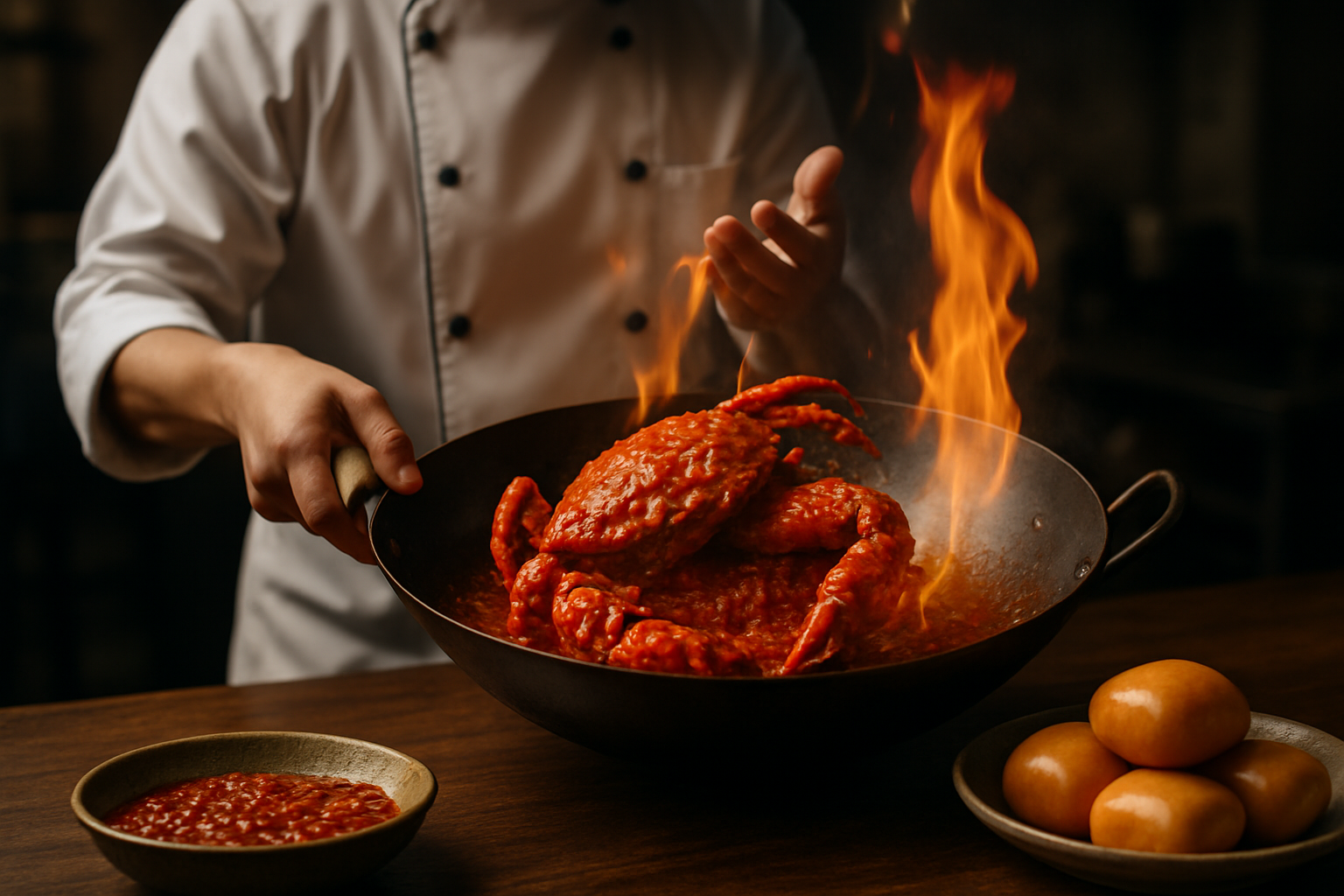Savoring the Sizzle: The Art of Flambé Cooking
Ignite your culinary passion with the spectacular technique of flambé. This fiery cooking method adds drama and depth to dishes, transforming ordinary meals into extraordinary experiences. Join us as we explore the sizzling world of flambé, from its rich history to modern applications that will set your taste buds ablaze.

The Science Behind the Spectacle
At its core, flambé is a simple chemical reaction with delicious results. The process involves adding alcohol to a hot pan, which causes it to ignite and produce those iconic flames. But there’s more to it than just pyrotechnics. When alcohol is heated, it begins to evaporate, and its vapors can be ignited. As the alcohol burns off, it leaves behind its essence, infusing the dish with deep, complex flavors. The high heat also caramelizes sugars in the food, creating a rich, slightly sweet taste. Additionally, the sudden intense heat can help seal in juices and create a crisp exterior on meats. It’s important to note that contrary to popular belief, not all of the alcohol burns off during flambéing. Depending on the cooking time and method, anywhere from 5% to 85% of the alcohol can remain in the finished dish. This residual alcohol contributes to the final flavor profile, making flambé a technique that’s as much about taste as it is about showmanship.
Mastering the Flambé Technique
To become a flambé aficionado, one must first understand the basics of this fiery technique. Safety is paramount when working with open flames, so proper preparation is key. Start by choosing the right pan – a long-handled skillet or chafing dish works best. Ensure your cooking area is clear of flammable materials and have a fire extinguisher nearby. When it comes to alcohol, opt for liquors with a high alcohol content (40% or higher) such as brandy, rum, or cognac. These will ignite more easily and produce a more impressive flame. To flambé, heat your dish in the pan, then add the alcohol. Tilt the pan slightly away from you and use a long-handled lighter to ignite the vapors at the edge of the pan. Gently shake or swirl the pan to spread the flames evenly. As the flames subside, your dish will be infused with a complex, smoky flavor. Remember, patience is key – allow the alcohol to burn off completely before serving to ensure the best taste and texture.
Beyond Desserts: Savory Flambé Creations
While flambé is often associated with desserts like Bananas Foster or Cherries Jubilee, this technique can elevate a wide range of savory dishes as well. Steak Diane, a classic flambéed dish, involves cooking a tender cut of beef in a rich sauce ignited with brandy. For a seafood twist, try Lobster Flambé, where succulent lobster tails are bathed in a cognac flame, resulting in a dish that’s both visually stunning and incredibly flavorful. Poultry dishes can also benefit from the flambé treatment. Consider preparing Chicken Flambé with a white wine and herb sauce, ignited with a splash of Pernod for an anise-tinged finish. For vegetarians, a dramatic Flambéed Vegetable Medley can turn ordinary veggies into a show-stopping centerpiece. By experimenting with different spirits and ingredients, you can create a wide array of flambé dishes that will impress and delight your dinner guests.
The Modern Flambé Renaissance
In recent years, there has been a resurgence of interest in flambé cooking, with modern chefs putting their own spin on this classic technique. Molecular gastronomy has embraced flambé, using it to create innovative dishes that play with texture and flavor. Some chefs are experimenting with unconventional alcohols, such as absinthe or flavored liqueurs, to add unique twists to traditional flambé recipes. The rise of open-kitchen restaurants has also contributed to flambé’s comeback, as diners increasingly seek out interactive and visually appealing dining experiences. Even mixologists are getting in on the action, creating flambéed cocktails that combine the spectacle of flames with carefully crafted flavor profiles. As the culinary world continues to evolve, flambé remains a testament to the enduring appeal of cooking as both art and science, captivating diners with its perfect blend of drama and deliciousness.
Flambé Fun Facts and Tips
• The ideal alcohol content for flambéing is between 40% and 80% ABV.
• Always add alcohol to the pan off the heat to prevent unexpected flare-ups.
• Warm the alcohol slightly before adding it to the pan for a more impressive flame.
• The blue color of the flame indicates that the alcohol is burning cleanly.
• Flambé not only adds flavor but also helps to reduce and thicken sauces.
• Never pour alcohol directly from the bottle into a flaming pan – use a ladle or jigger.
• The higher the altitude, the lower the temperature at which alcohol will ignite.
• Fruit-based spirits like brandy or kirsch work particularly well in dessert flambés.
• For a non-alcoholic alternative, try using fruit juices mixed with a small amount of extract.
• Always let the flames die down naturally – don’t blow them out like birthday candles!
In conclusion, flambé cooking is more than just a flashy technique – it’s a culinary art form that combines showmanship with real gastronomic benefits. By mastering the art of flambé, home cooks and professional chefs alike can add a new dimension to their culinary repertoire, creating dishes that are as memorable to watch as they are to eat. So why not add a little fire to your next meal? With proper precautions and a dash of creativity, you can turn your kitchen into a stage for culinary pyrotechnics that will dazzle and delight your taste buds.





